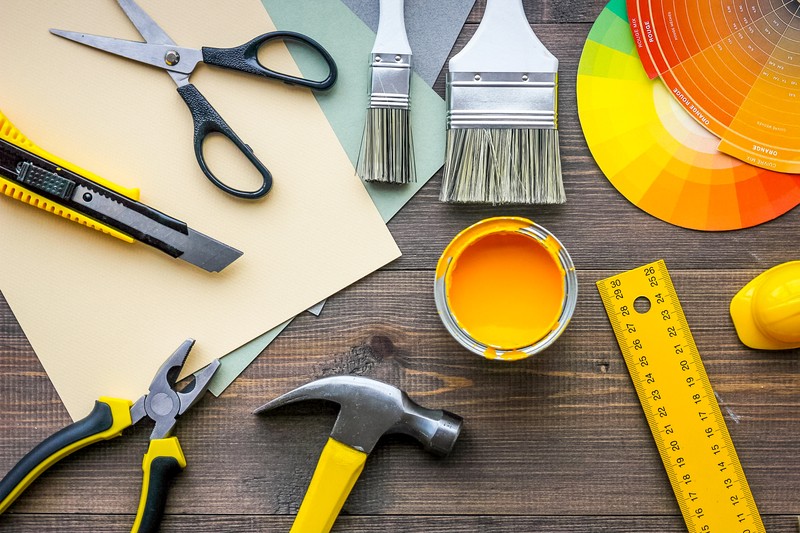If you’ve ever wondered when in your adult life you’d ever need to know math, try doing a home improvement project. Every building task includes math, and your work will be so much easier if you know how to apply the concepts and formulas.
Installing New Flooring
Measuring to install new flooring isn’t as easy as it seems. Rooms are rarely perfect rectangles. Most have small closets, hallways, or doorway areas that you need to account for. Finding the square footage requires both measuring areas and adding them up.
Tile and plank flooring are sold in boxes, so that adds another step to the puzzle. You’ll have to determine your square footage and then find out how many square feet each box will cover.
Changing Out Cabinets
Before you change out your cabinets, you’ll need to measure the width, height, and depth, and sometimes angles and cutouts like space for a dishwasher. It’s best to start by drawing a diagram of your kitchen.
If you’re updating your cabinets rather than replacing them, the job will also go more smoothly if you apply math. For example, you may need to calculate the volume of your cabinet before installing improvements such as pull-out shelves. Installing pull-out shelves can be easy, and is a great way to make it easier to get to what you need once you’re all done with the project.
Painting a Room
Before you paint a room, you need to know how much paint to buy. You don’t want to fall short and need to take another trip to the store, but you also don’t want to buy too much extra. Often, custom-mixed tints aren’t easily returnable.
Many people don’t allow for the areas you don’t have to paint, such as doorways, windows, and built-in cabinets or other features. The area of these items should be subtracted from the total square feet that you figured. That could save you a gallon or two.
Creating a New Garden
When creating a new garden, you’ll need to figure how many plants to buy to fill it up. This involves figuring the square footage and accounting for the number of inches needed between plants. If plants are spaced too closely, they won’t grow well.
For garden edging, you must measure the perimeter of the garden in order to determine how much edging to buy. It will be easy if you buy edging sold by linear feet. If you use bricks, you’ll need to divide the perimeter by the length of the brick to determine how many bricks to buy.
Making a Fire Pit
Fire pits are typically round, so your geometry skills will come in handy. You will need to figure how much gravel to line the pit with. Bags of gravel are usually measured in cubic feet. Use the formula ?R squared to find the area of your fire pit.
But you’ll also need to figure out how deep you want the gravel to be. Take that number and multiply it by the square footage. That will give you the cubic feet needed. To figure the number of bags, divide the total cubic footage by the cubic footage covered by each bag.
Putting Up Shelves
Whether you’re putting up shelves for a practical or a decorative purpose, you want them to be even and at the right height. If you have more than one shelf, you’ll also want them to be evenly spaced. Measuring the height of the shelf is fairly easy, but remember to add an inch for the thickness of the shelf itself.
You may also need to center the shelf between two objects or corners. Measure the distance and the length of the shelf. Then, subtract the length of the shelf from the total distance and divide by 2. That will give you the number of inches of space to leave on each side of your shelf.
Installing a Swimming Pool
Before buying a swimming pool, you’ll need to determine what size and shape to buy. You’ll need to figure out the total square footage of your yard, minus the buffer areas you need for the distance between the pool and the house, trees, sheds, and other obstacles.
Draw a diagram of your available space and then figure the area of the pool you are considering. Pools may be round, oval, or rectangular, so you’ll need to know how to find the square footage of each. Add extra room for stakes, supports, steps, the filter, and other accessories.
Every home improvement project demonstrates math in action, and the more you know, the easier the job will go. Review your skills if they’re rusty, and get your kids involved so they get real-world practice in math.
Worried about getting your conversions right? Check out this calculator!
